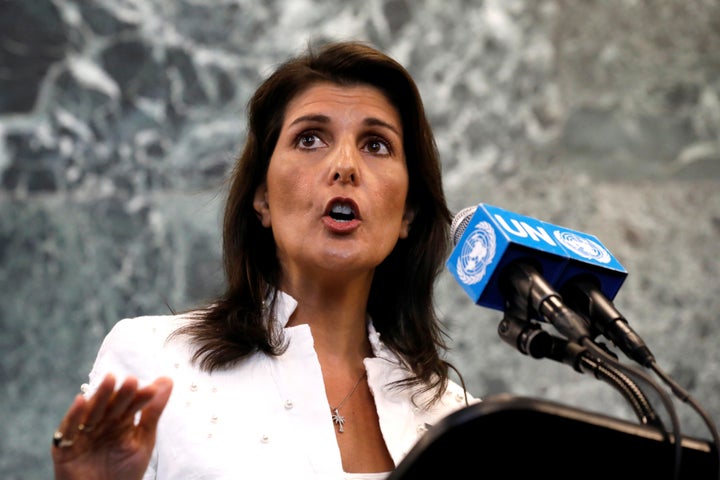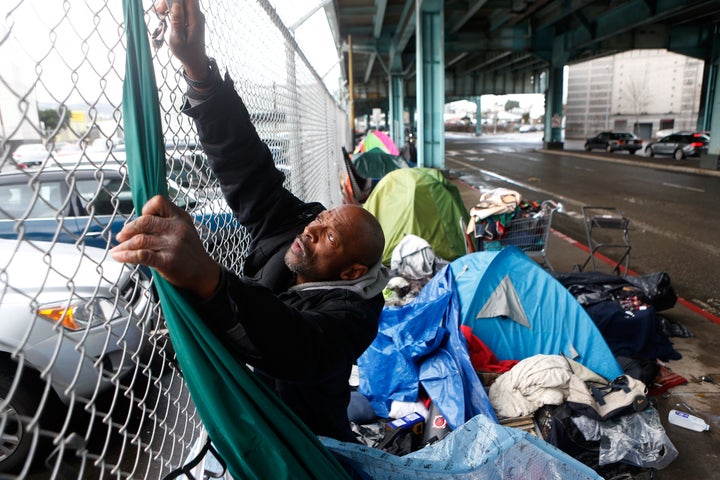The Trump administration would like you to believe that poverty doesn’t really exist in the United States of America.
First, U.S. Ambassador to the U.N Nikki Haley argued in June that it was “patently ridiculous” for the United Nations to study poverty in America, a waste of “time and resources.” Then President Donald Trump’s Council of Economic Advisers released a 66-page report all but asserting that poverty isn’t a problem in the country. In service of the administration’s goal of imposing work requirements on any anti-poverty program it can, like health insurance or housing, it’s declaring victory in the war on poverty launched a half-century ago. The true problem, the administration claims, is not that people are poor, but that they’ve been made lazy and have to be forced to work.
They couldn’t be more wrong. Poverty exists, and the administration’s favored policy changes will only make it dramatically worse.
As with Trump’s relationship to other kinds of economic data ― fudging the numbers when it suits him, claiming the credit only when it makes him look good—the administration’s argument that poverty doesn’t exist in America is built on a deeply questionable basis. Rather than relying on the official poverty numbers released by the Census Bureau, the CEA would rather use an alternative measure based on how much families spend, not how much money they have.

On its face, it’s a strange way to measure poverty — not by the money in your bank account, but by what you buy, which can be funded by cash but also simply racking up debt. And indeed, when two economists examined this way of measuring poverty earlier this year, they found the method doesn’t hold up. The other measures — the official poverty numbers, the supplemental ones, measures of material hardship, measures of how many people lack decent work— have their flaws, but they all point to poverty rates multiple times higher. In fact, the consumption-only measure would lead one to believe that poverty dropped significantly during the Great Recession, a time of mass unemployment and foreclosures that decimated people’s finances.
We have other ways of knowing that poverty is still a huge problem in the U.S. You can just ask poor people whether they exist. If Trump and his advisers want to claim that it’s been solved, they have a lot of people to explain themselves to.
They should tell that to the more than half a million people in the U.S. who are homeless on any given night — including almost 200,000 who have no shelter at all — a number that is widely considered to be an undercount. The Trump administration points out that, according to this count, “99.9 percent of people had shelter and 99.8 percent were housed.” Even if that’s accurate, those who constitute the administration’s rounding error still go without a home in one of the wealthiest countries in the world.

If the Trump administration really thinks poverty doesn’t exist in the U.S., they should tell that to the 15.6 million American families who were food insecure for at least part of 2016, meaning they had limited access to food because they couldn’t afford what they needed. More than 6 million of those families went through times where someone in the household had to cut back on how much they ate and their eating patterns were disrupted because they couldn’t afford enough food. It’s true, as the CEA report notes, that “the vast majority of Americans have reliable access to food.” But even a small bout of cutting back on nutrition has huge health impacts, particularly on children.
The administration should tell it to the people teetering on the edge of financial ruin, including the 7 percent of adults who say they struggle to get by and the 40 percent who wouldn’t be able to cover an unexpected expense of just $400.
And they should tell it to the rising number of families living in extreme poverty, surviving off of a mere $2 per person per day. That’s not only considered severe here at home; that kind of hardship is what the World Bank would dub extreme poverty anywhere in the world. Many of these families, researchers have found, have no money coming in — not through work and not through public benefits ― all in one of the richest countries on the planet.
“15.6 million American families were food insecure for at least part of 2016, meaning they had limited access to food because they couldn’t afford what they needed.”
Those families, in fact, offer a perfect case study in why the Trump administration’s desire to add work requirements to many social programs is so pernicious. Congress passed welfare reform in 1996; now, poor people have to leap over a number of hurdles to get help. One of the hurdles is a work requirement, which forces the poor to search for and secure a job and then prove it to a caseworker in order to get their benefits. Right after welfare reform passed, extreme poverty began to spike, particularly among those who were subject to those policy changes.
Work requirements aren’t the only reason extreme poverty has risen, but they did throw people off the rolls and mostly leave them in dire poverty. In Kansas, the median earnings four years later for people who had left welfare because of a work requirement were just $2,175 a year, while more than a third had no income at all. In Maryland, only 8 percent managed to rise above the poverty line. In a number of other states, people who were kicked off the program because of work requirements were more likely to live in deep poverty than out of it.
Welfare work requirements also haven’t helped people get good, steady work. Instead, they’ve left a growing slice of the country in desperate poverty, despite the administration’s claims that it doesn’t exist.
The CEA explicitly says it is trying to build on 1990s welfare reform, claiming that that experience proves its case that all programs should include the same work requirements. But 20 years after that policy change, it’s clear that too many families have been left out of the social safety net altogether, forced to subsist on pitiful amounts of money in a country that boasts the richest billionaires in the world; in a country whose collective wealth has surpassed the $1 trillion mark. Imposing work requirements on even more people struggling to get by will only increase their hardship.
If Trump doesn’t think poverty is a problem now, just wait until people who make ends meet thanks to food stamps and Medicaid have nothing left at all. No matter what metrics he wants to use, no matter how much he tries to fudge the numbers, the ranks of the poor ― undeniably in existence today ― will swell and their suffering will spike. We’ll have retreated even further in the war on poverty, a battle Trump wants to pretend we’ve already won.
Bryce Covert is an independent journalist writing about the economy. She is a contributing Op-Ed writer at The New York Times and a contributing writer at The Nation.
